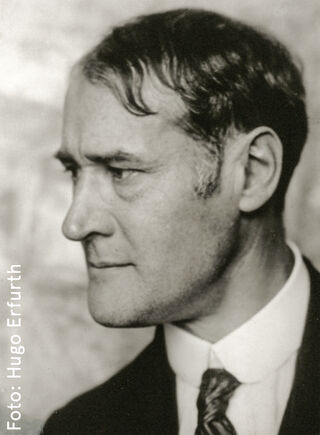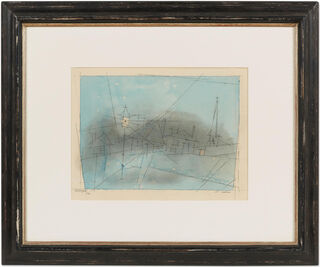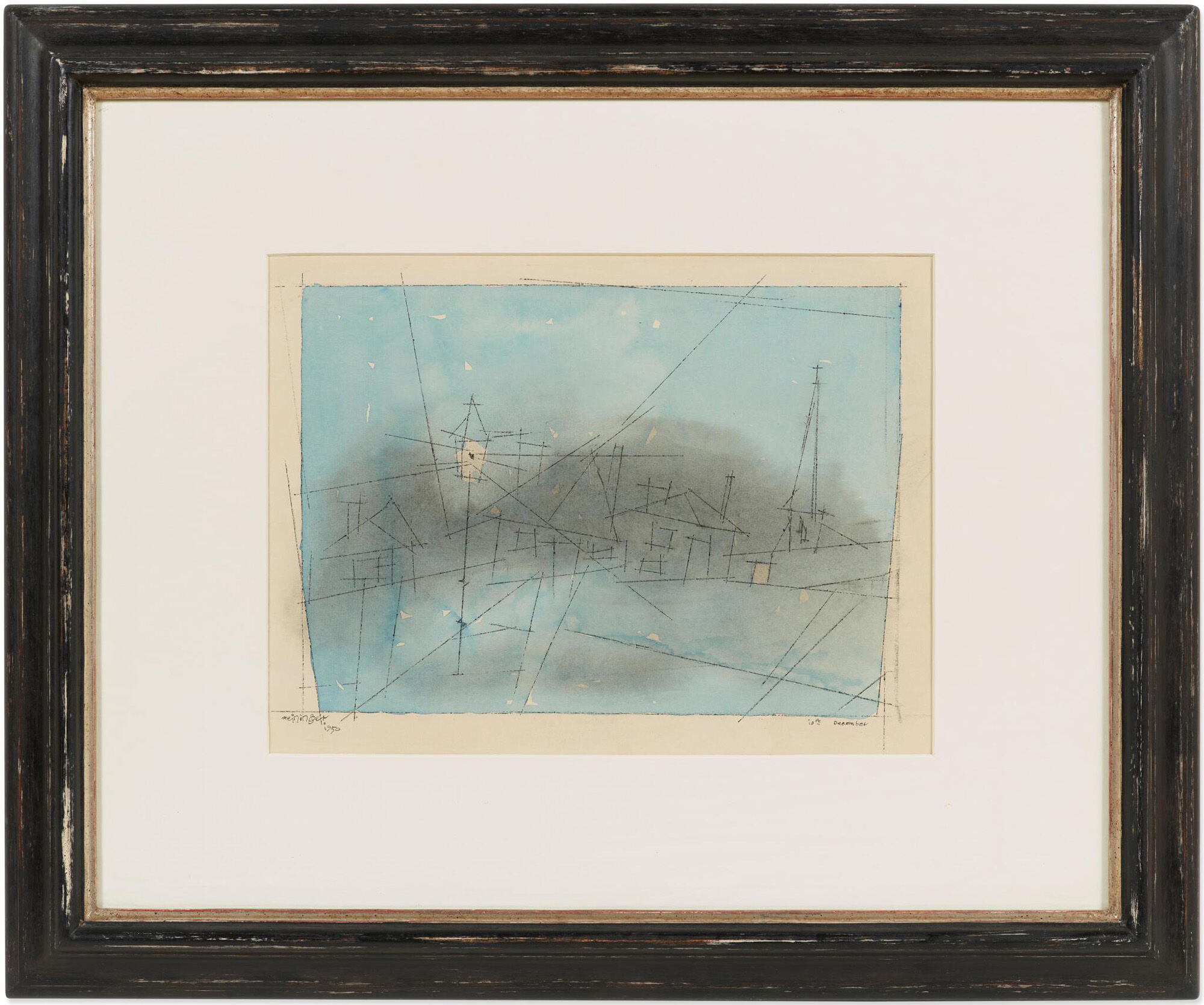Picture "Village in Blue with Street Lamp" (1950) (Unique piece)


Picture "Village in Blue with Street Lamp" (1950) (Unique piece)
Quick info
unique piece | signed | dated | mixed media on paper | framed | size 60.5 x 73 cm
Detailed description
Picture "Village in Blue with Street Lamp" (1950) (Unique piece)
Watercolour, ink and charcoal on paper, 1950. Signed and dated. With certificate from Achim Moeller, The Lyonel Feininger Project LLC. Motif size/sheet size 31.6 x 47.7 cm. Size in frame 60.5 x 73 cm as shown.

About Lyonel Feininger
1871-1956
Lyonel Feininger is known for his depictions of streets, cities and ships, which are composed of prismatically broken forms and inspired by Cubism and the art of Robert Delaunay.
The painter and graphic artist was born in New York in 1871 as the son of German musicians. He first came to Germany at the age of 16 for a concert tour of his parents and stayed there to study at the Hamburg School of Applied Arts and later at the Royal Prussian Academy in Berlin. After a study visit to Paris, he continued living and working for many years in Germany, where he was close to the "Blauer Reiter" artists' group. Starting in 1919, he made his mark as a master for the graphic workshops of "Bauhaus" in Weimar, Dessau and Berlin.
Feininger, along with Schlemmer, most explicitly realised the Bauhaus ideal of order. For him, the starting point is not the human figure but architecture, the strict geometric structure of forms that he observed in Gothic churches. His studies of the architecture of small German towns established his light-flooded, prismatic style, which was to become a model for many artists.
Feininger first devoted himself to German townscapes and churches. During the National Socialist era, the Nazi Party officially declared Feininger’s work to be "degenerate", which forced him to return to New York in 1937. There he created his famous impressions of the architecture of Manhattan and New York.
Paintings with glazing watercolours, that are characterised by their transparency, which let deeper layers and painting surfaces shine through.
Often the paper surface is omitted. This contributes significantly to the effect of the work. The aquarelle painting requires skilful use of colour, as it dries quickly and corrections are almost impossible.
Graphic artwork in the making of which the artist combines at least two graphic techniques.
A one-of-a-kind or unique piece is a work of art that has been personally created by the artist. It exists only once due to the type of production (oil painting, watercolours, drawing, etc.).
In addition to the classic unique pieces, there exist the so-called "serial unique pieces". They present a series of works with the same colour, motif and technique, manually prepared by the same artist. The serial unique pieces are rooted in "serial art", a type of modern art, that aims to create an aesthetic effect through series, repetitions and variations of the same objects or themes or a system of constant and variable elements or principles.
In the history of arts, the starting point of this trend was the work "Les Meules" (1890/1891) by Claude Monet, in which for the first time a series was created that went beyond a mere group of works. The other artists, who addressed to the serial art, include Claude Monet, Piet Mondrian and above all Gerhard Richter.


